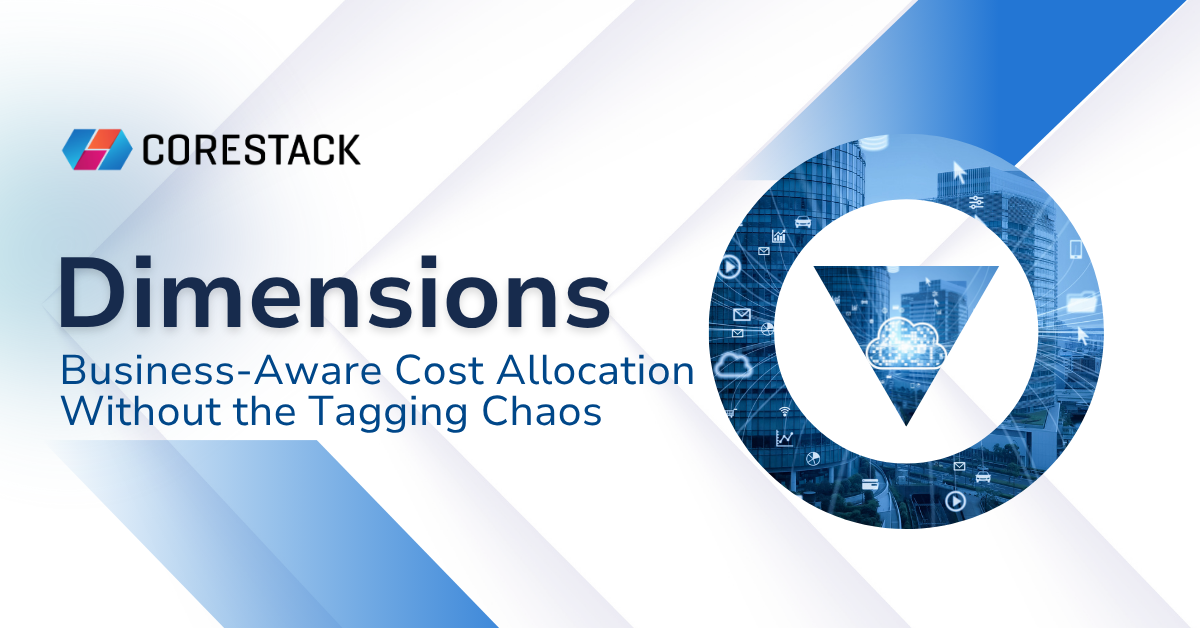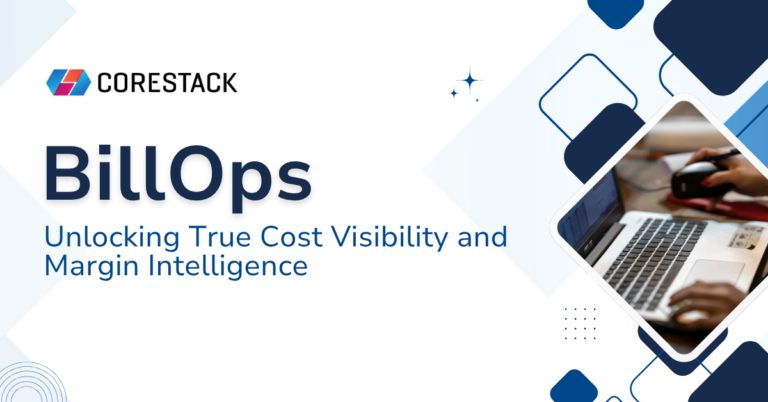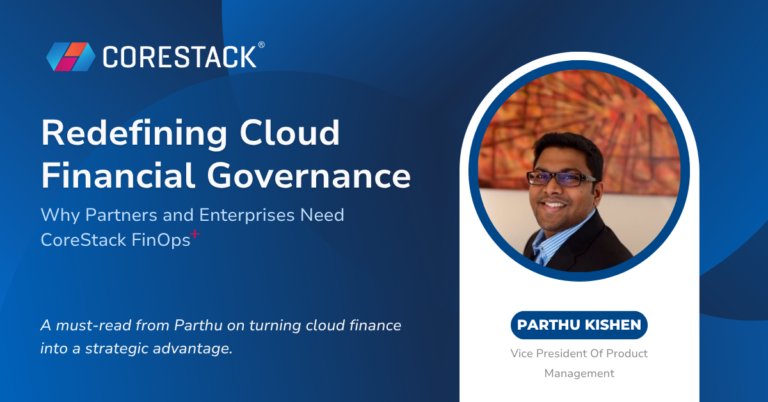Dimensions – Business-Aware Cost Allocation Without the Tagging Chaos
Bringing Business Context to Cloud Spend with Dimensions
In large organizations, cloud billing data rarely reflects how the business actually operates. Finance leaders want to see spend by department, application owners need visibility into their workloads, and FinOps teams need to allocate costs across shared environments. But traditional billing views—organized by cloud accounts or tags—don’t support this level of business alignment.
CoreStack’s Dimensions capability solves this by allowing organizations to define logical groupings like Teams, Departments, Applications, or Cost Centers—without modifying underlying cloud tags or billing files. It supports custom categories, virtual tags, meta dimensions, hierarchical nesting, and multi-cloud modeling.
With Dimensions, organizations can operationalize FinOps at scale—turning raw billing data into actionable business insights.
What Are Dimensions?
Dimensions describes CoreStack’s business-aware cost modeling engine that overlays logical groupings on top of raw cloud billing data. It enables organizations to:
- Define custom Dimensions (e.g., Department, Application, Cost Center) without relying on cloud-native tags
- Attach metadata like owner, region, and budget to each group for rich reporting and filtering
- Nest Dimensions hierarchically to support top-down or bottom-up cost rollup
- Model spend across clouds (AWS, Azure, GCP, OCI) for unified multi-cloud visibility
Dimensions bridges the gap between cloud billing data and business accountability—without the tagging chaos.
Key Capabilities That Solve Real Problems
Here are some of the common cloud cost management challenges organizations face—and how Dimensions helps solve them:
Business-Aligned Cost Views
Organizations need to see cloud spend by business unit, not just by cloud account.
Dimensions enables grouping by department, team, application, or cost center—making it easy to align spend with how the business is actually structured.
Tagging Independence
Tagging is often inconsistent or incomplete, especially in shared environments.
Dimensions reduces dependency on tagging by allowing logical groupings and virtual tags. In future releases, it will support resource name-based filters, making tagging optional for many use cases.
Meta Dimensions for Rich Context
Finance and leadership teams need more than just cost—they need context.
Meta dimensions attach attributes like owner, region, and budget to each group, enabling rich filtering, reporting, and stakeholder-specific dashboards.
Hierarchical Rollups
Complex organizations require multi-level reporting.
Dimensions supports nested groupings, allowing cost rollups from workload to application to team to division—critical for enterprise chargeback and budgeting workflows.
Why It Matters: Business Outcomes That Drive Impact
Dimensions helps organizations move beyond reactive cost tracking to proactive financial governance:
- Faster Onboarding: Launch dashboards and reports without waiting for perfect tagging.
- Improved Accountability: Align spend with business units, applications, and teams.
- Reduced Manual Effort: Eliminate spreadsheet-based reconciliation and reporting.
- Smarter Forecasting: Use historical data by Dimension to drive budget planning.
- Scalable Governance: Apply grouping logic instantly—no reprocessing required.
See Dimensions in Action
Ready to align your cloud spend with your business structure? Discover how CoreStack Dimensions can help you simplify cost allocation, improve visibility, and scale FinOps across your organization. Experience Dimensions in action at corestack.io/dimensions.







